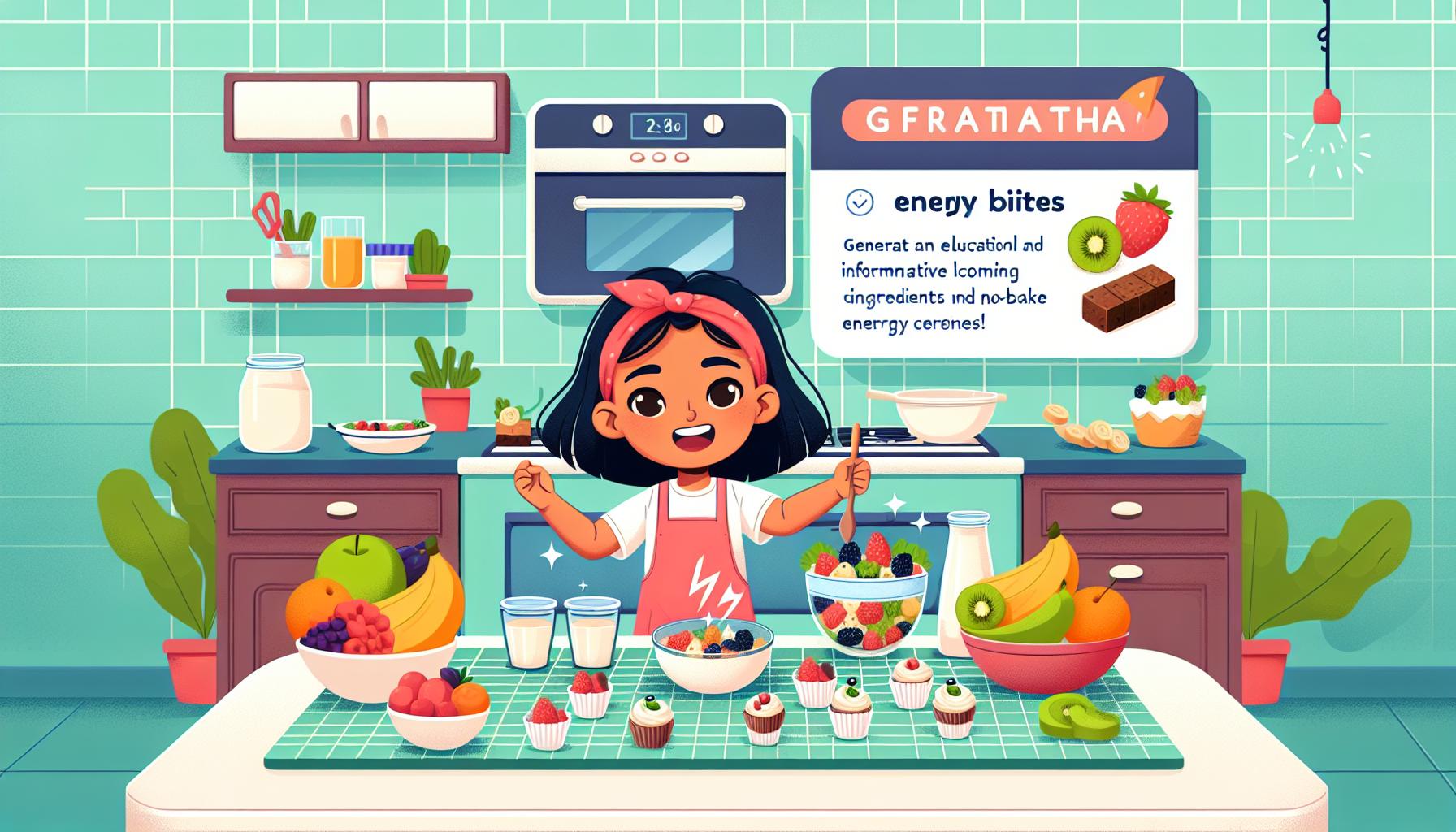
Keeping hungry kids happy after school can feel like a daily challenge. We know the struggle of balancing healthy eating with quick preparation while managing homework time and activities. That’s why we’ve gathered some practical cooking ideas that’ll make your afternoons run smoother.
Looking for ways to turn after-school snacks into fun learning opportunities? Cooking together not only satisfies growing appetites but also teaches valuable life skills. From 15-minute mini pizzas to no-bake energy balls these recipes will transform your kitchen into an exciting space where kids can help create their own nutritious treats. Let’s explore some simple yet tasty options that’ll make everyone look forward to coming home from school.
Key Takeaways
- After-school cooking activities promote essential life skills development, including math, reading comprehension, and scientific understanding while creating nutritious snacks.
- Quick 15-minute recipes like no-bake energy bites and yogurt parfaits provide healthy options that kids can help prepare with minimal supervision.
- Setting up designated prep stations and pre-portioning ingredients during weekend meal prep saves time and encourages independent, healthy snacking habits.
- Kid-friendly recipes like creative sandwich wraps, smoothies, and microwave mug treats allow children to participate safely in the kitchen while learning basic cooking skills.
- Implementing proper kitchen safety measures, including age-appropriate tasks and clear guidelines, ensures a positive cooking experience for children of different age groups.
Why After-School Cooking Matters for Kids
After-school cooking transforms everyday snack time into valuable learning opportunities for children. It combines essential life skills with fun activities that keep kids engaged during the afternoon hours.
Benefits of Getting Kids in the Kitchen
Cooking activities strengthen multiple developmental areas in children. Here’s how kitchen time enhances their growth:
- Math Skills: Measuring ingredients teaches fractions, multiplication, division
- Reading Development: Following recipes improves comprehension skills
- Science Understanding: Observing chemical reactions in cooking processes
- Motor Skills: Stirring, pouring, cutting (with supervision) enhance coordination
- Confidence Building: Creating finished dishes boosts self-esteem
| Skill Area | Development Benefits |
|---|---|
| Academic | Math, reading, science application |
| Physical | Fine motor skills, hand-eye coordination |
| Social | Communication, teamwork, following directions |
| Emotional | Self-confidence, independence, creativity |
- Keep a step stool nearby for reaching countertops safely
- Establish “hot zones” around stoves, ovens, microwaves
- Use child-safe knives for ages 7+ with direct supervision
- Practice proper hand washing before touching food
- Store cleaning supplies in locked cabinets
- Keep fire extinguisher accessible
- Post emergency numbers in visible locations
| Age Group | Recommended Kitchen Tasks |
|---|---|
| 4-6 years | Mixing, pouring, washing produce |
| 7-9 years | Measuring, simple cutting, greasing pans |
| 10-12 years | Basic stovetop cooking, using small appliances |
Quick and Easy 15-Minute Snack Ideas

These fast snack recipes offer delicious options for hungry kids after school. Here’s how to prepare nutritious treats in 15 minutes or less.
No-Bake Energy Bites
No-bake energy bites combine wholesome ingredients into portable snacks kids love. Mix 1 cup oats, ½ cup peanut butter, ⅓ cup honey, ¼ cup mini chocolate chips, 2 tablespoons chia seeds in a bowl. Roll the mixture into 1-inch balls and refrigerate for 10 minutes. Kids can help measure ingredients, mix the components, and shape the bites.
Common variations include:
- Adding dried fruit like cranberries or raisins
- Using almond butter instead of peanut butter
- Including coconut flakes or crushed nuts
- Swapping chocolate chips for cacao nibs
Fresh Fruit and Yogurt Parfaits
Fresh parfaits create a balanced snack with protein, fruits, and whole grains. Layer ½ cup vanilla Greek yogurt, ¼ cup granola, and ½ cup mixed berries in a clear glass. Kids participate by washing fruits, measuring ingredients, and creating colorful layers.
Popular parfait combinations:
- Mixed berries with honey drizzle
- Sliced peaches with maple granola
- Diced apples with cinnamon
- Banana slices with chocolate granola
| Ingredient Portions | Amount per Parfait |
|---|---|
| Greek yogurt | ½ cup |
| Fresh fruit | ½ cup |
| Granola | ¼ cup |
| Optional honey | 1 teaspoon |
These parfaits store well in containers for up to 24 hours, making them perfect for advance preparation.
Kid-Friendly Sandwich Creations

Sandwiches offer endless possibilities for after-school snacks that kids can help prepare. These simple recipes transform basic ingredients into exciting combinations while teaching food preparation skills.
Creative Wrap Combinations
Wraps make versatile handheld snacks perfect for young chefs to assemble. Here’s what works best:
- Spread hummus on whole wheat tortillas topped with shredded carrots for crunch
- Layer turkey slices with cream cheese spread on spinach wraps
- Mix tuna with light mayo then add cucumber strips on sun-dried tomato wraps
- Roll peanut butter with sliced bananas in cinnamon-raisin wraps
- Combine shredded chicken with mild salsa in Mexican-style wraps
Pro tip: Cut wraps into pinwheels using a serrated knife for bite-sized portions that kids love.
- Cut sandwiches into shapes using cookie cutters:
- Stars filled with cream cheese and jam
- Hearts stuffed with egg salad
- Circles packed with pb&j
- Create mini-stacks with:
- Three layers of bread
- Colorful fillings
- Decorative picks to hold together
- Make open-faced art pieces using:
- Cucumber circles for eyes
- Cherry tomato noses
- Bell pepper smiles
| Popular Sandwich Combinations | Prep Time | Kid-Friendly Tasks |
|---|---|---|
| Cookie Cutter Shapes | 5 mins | Cutting shapes, spreading fillings |
| Pinwheel Wraps | 8 mins | Rolling, arranging ingredients |
| Open-Face Art | 10 mins | Decorating, assembling faces |
Healthy Smoothies and Drinks
Nutritious drinks offer a refreshing twist to after-school snacks while packing essential nutrients kids need. Creating these beverages transforms ordinary ingredients into colorful concoctions that make healthy choices exciting.
Power-Packed Smoothie Recipes
Our kid-tested smoothie combinations blend fruits, vegetables, and protein-rich ingredients into delicious treats:
- Mix 1 banana + 1 cup spinach + 1 cup milk + 2 tablespoons peanut butter
- Blend 1 cup mixed berries + ½ cup Greek yogurt + 1 cup almond milk
- Combine 1 cup mango + ½ cup carrots + 1 cup coconut water + ½ inch ginger
- Whisk 1 cup peaches + ½ cup oats + 1 cup milk + 1 tablespoon honey
Kids can help by:
- Measuring ingredients
- Pressing the blender buttons
- Adding ice cubes
- Choosing fruit combinations
Infused Water Ideas
Flavored water encourages hydration through natural ingredients without added sugars:
Basic combinations:
- Cucumber + mint leaves
- Strawberry + basil
- Orange + lemon slices
- Apple + cinnamon sticks
Preparation tips:
- Slice fruits thinly for maximum flavor
- Add herbs first to release oils
- Fill container with cold water
- Refrigerate 2-4 hours before serving
| Infusion Type | Refrigerator Life | Best Served |
|---|---|---|
| Citrus | 24 hours | Same day |
| Berry | 48 hours | Within 2 days |
| Herb | 12 hours | Same day |
| Cucumber | 24 hours | Within 1 day |
Simple Baking Projects for Kids
Baking projects transform after-school time into an engaging learning experience where kids develop essential kitchen skills. These beginner-friendly recipes create opportunities for measuring ingredients exploring new techniques while making delicious treats.
Cookie and Muffin Mix Hacks
Pre-made baking mixes serve as perfect starting points for creative afternoon treats. Kids mix dry ingredients with wet components like eggs oil then add custom mix-ins such as chocolate chips dried fruit or nuts. Simple variations include:
- Replace water with milk in muffin mixes for richer texture
- Add 1/4 cup sprinkles to cookie dough for funfetti treats
- Mix crushed candy pieces into basic sugar cookie dough
- Swirl 2 tablespoons jam into muffin batter before baking
- Top cookies with colored sugar or frosting decorations
Microwave Mug Recipes
Single-serving mug treats offer quick satisfaction with minimal cleanup. Kids learn portion control measuring skills through these 3-minute recipes:
- Chocolate Mug Cake
- 4 tablespoons flour
- 4 tablespoons sugar
- 2 tablespoons cocoa powder
- 1 egg
- 3 tablespoons milk
- Microwave 1-2 minutes
- Blueberry Mug Muffin
- 4 tablespoons pancake mix
- 3 tablespoons milk
- 1 tablespoon vegetable oil
- 2 tablespoons blueberries
- Microwave 90 seconds
| Recipe Type | Prep Time | Cook Time | Skill Level |
|---|---|---|---|
| Mix Hacks | 10 min | 12-15 min | Beginner |
| Mug Treats | 3 min | 1-2 min | Beginner |
Each recipe includes pre-measured ingredients easy-to-follow steps illustrated instructions. Kids practice kitchen safety measuring techniques following directions through hands-on experience.
Make-Ahead Prep Tips for Busy Parents
Smart meal prep saves precious afternoon time during busy school weeks. Here’s how to streamline your after-school cooking routine:
Weekend Prep Essentials
- Wash fruits whole and store them in clear containers at eye level
- Cut vegetables into snack-sized portions using airtight containers
- Portion nuts dried fruits into small reusable bags
- Mix dry ingredients for baking projects in labeled mason jars
- Prepare homemade granola in large batches
Quick Assembly Stations
Set up designated zones in your fridge and pantry:
- Bottom shelf: Pre-portioned protein options (hard-boiled eggs cheese cubes)
- Middle shelf: Washed produce in grab-and-go containers
- Door: Healthy dips sauces in squeezable bottles
- Pantry: Shelf-stable ingredients at kid-height
Time-Saving Shortcuts
- Pre-measure frequently used ingredients:
- Smoothie packs with frozen fruit combinations
- Baking mix portions in zip-top bags
- Snack portions in reusable containers
- Prep common ingredients in advance:
- Cooked quinoa or rice (stores 3-4 days)
- Shredded cheese (keeps 5-7 days)
- Chopped vegetables (lasts 3-5 days)
| Food Item | Storage Container | Shelf Life |
|---|---|---|
| Cut Fruit | Glass containers | 3-4 days |
| Vegetables | Airtight containers | 4-5 days |
| Baking Mixes | Mason jars | 2-3 months |
| Smoothie Packs | Freezer bags | 2-3 months |
How do you handle the after-school rush in your home? Creating these prep stations helps kids become more independent while maintaining healthy eating habits.
Remember to label containers with prep dates using masking tape markers. Rotate items weekly to maintain freshness maximize your prep work impact.
Conclusion
Getting kids involved in after-school cooking isn’t just about filling hungry tummies – it’s about creating lasting memories and teaching valuable life skills. We’ve seen how simple recipes and smart preparation can transform those hectic afternoon hours into enjoyable learning experiences.
By implementing these cooking ideas and organization strategies we’re investing in our children’s development while making healthy eating fun and accessible. The kitchen becomes a classroom where creativity meets nutrition and where every measuring spoon and mixing bowl builds confidence.
Let’s embrace these moments of culinary adventure with our kids and watch them grow into capable confident food explorers. With these strategies in place we’re all set for smoother more enriching after-school experiences.
Frequently Asked Questions
What are the best quick snacks for kids after school?
The best quick snacks include no-bake energy bites, fresh fruit and yogurt parfaits, mini pizzas, and creative sandwich wraps. These options can be prepared in 15 minutes or less and offer a good balance of nutrients. They’re also fun for kids to help make and can be customized to their preferences.
How can cooking with kids benefit their development?
Cooking with kids enhances various developmental areas including math skills (through measuring), reading comprehension (following recipes), scientific understanding (observing food changes), and motor skills. It also boosts self-confidence and teaches valuable life skills while making learning fun and engaging.
What safety precautions should be taken when cooking with kids?
Essential safety measures include using step stools for proper height, establishing clear “hot zones” in the kitchen, teaching proper hand washing, and supervising knife use. Always demonstrate proper techniques first and ensure children understand basic kitchen safety rules before starting any cooking activity.
How can parents prep ahead for after-school snacks?
Parents can prep on weekends by washing fruits, cutting vegetables, and portioning snacks into reusable bags. Setting up assembly stations in the fridge and pantry helps kids become more independent. Pre-measuring ingredients and preparing common items in advance saves time during busy weekdays.
What are some healthy drink options for after-school snacks?
Healthy drink options include power-packed smoothies made with fruits, vegetables, and protein-rich ingredients, as well as naturally infused water. These beverages can be customized with different fruit combinations and provide hydration without added sugars.
How can kids help in the kitchen based on their age?
Young children can wash fruits, stir ingredients, and arrange toppings. Older kids can measure ingredients, use simple kitchen tools, and follow basic recipes. Teenagers can handle more complex tasks like using appliances and preparing complete snacks under supervision.
What are some simple baking projects for kids?
Simple baking projects include using pre-made baking mixes, microwave mug cakes, and blueberry mug muffins. These recipes are beginner-friendly and teach basic kitchen skills while allowing kids to customize their creations with mix-ins like chocolate chips or sprinkles.
How long can make-ahead snacks be stored?
Most prepared snacks like parfaits can be stored for up to 24 hours in the refrigerator. Energy bites can last up to a week when properly stored. Cut fruits and vegetables should be used within 2-3 days for best quality and food safety.

